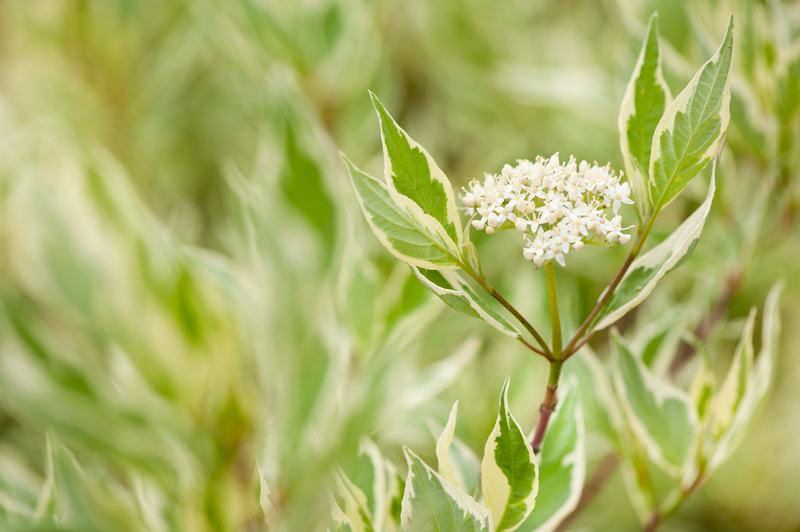Efficient Strategies to Restore Lawn Beauty by Removing Stumps
A lush, beautiful lawn is often a homeowner's pride. However, unsightly tree stumps can disrupt the landscape, reduce curb appeal, and even pose hazards to both lawn maintenance and outdoor activities. This comprehensive guide will introduce you to efficient strategies for restoring lawn beauty by removing stumps, offering Google-friendly, SEO-optimized advice to help you reclaim your outdoor space with ease.

Why Remove Tree Stumps from Your Lawn?
- Enhanced Aesthetic Appeal: A stump-free lawn looks cleaner and more inviting, improving the visual harmony of your garden or yard.
- Promotes Safety: Stumps create tripping hazards, especially for children and pets, and can damage mowers and other equipment.
- Prevents Pest Infestation: Decaying stumps attract termites, ants, fungi, and other pests, threatening the health of nearby plants.
- Prepares the Ground for New Growth: Removing stumps helps you reclaim lawn space for planting grass, flowers, or even new trees.
- Reduces Disease Transmission: Old stumps may harbor diseases that can spread to healthy trees or shrubs.
Understanding the Importance of Efficient Stump Removal
When considering different ways to restore your lawn's beauty by eliminating stumps, efficiency goes beyond speed--it also encompasses safety, cost-effectiveness, and minimal landscape disturbance. Choosing the right method ensures successful results while protecting the integrity of your lawn and garden.
Top Strategies for Restoring Lawn Beauty by Removing Stumps
Below, you'll discover various approaches to stump removal for a more beautiful lawn. From manual methods to advanced machinery, each stump elimination strategy has its own merits. Select the one that best matches your needs, budget, and the size of the stump.
1. Manual Stump Removal: Traditional Yet Effective
Manual stump removal is often suited for small to medium-sized stumps. Although labor-intensive, it's cost-effective and environmentally friendly. Here's how to perform the process:
- Digging Out the Stump
- Use a shovel to clear soil from around the base of the stump and expose its roots.
- Cut roots using a mattock, hand saw, or axe.
- Pry the stump from the ground once the major roots are severed.
- Chopping and Extracting the Roots
- Continue to cut back any remaining roots extending outward from the base.
- Leverage crowbars or root saws for stubborn roots.
Manual removal works best when stumps are fresh, smaller, and in less compacted soil. For larger stumps, this method can be extremely laborious.
2. Using Chemical Stump Removers for a More Convenient Alternative
Chemical solutions offer a time-saving option for efficiently removing stumps to restore lawn beauty. Chemicals accelerate decomposition, making the wood soft and easier to extract. The process involves:
- Drill several deep holes into the stump using a wide drill bit.
- Fill each hole with a chemical stump remover (commonly containing potassium nitrate).
- Add water to activate the chemicals as directed by the product instructions.
- Wait several weeks for the stump to decompose--conditions vary depending on weather and wood type.
- Break up the rotted wood with a shovel or axe and dispose of it safely.
- Advantages: Minimal manual labor, easy to apply, and available at most garden centers.
- Downsides: Time-consuming, potentially harmful to the surrounding plant life if used improperly, and requires patience.
Note: Always use protective gear and follow chemical safety guidelines strictly to protect yourself and the environment when deploying this method.
3. Stump Grinding: Fast, Efficient, and Professional
If you're facing a large or tough stump, stump grinding offers an efficient, widely recommended solution for restoring lawn beauty. This approach involves the use of a specialized stump grinder--a powerful machine designed to shred stumps into mulch, leaving your lawn clear and ready for revitalization.
- Procedure:
- Rent a stump grinder or hire a stump removal service.
- Position the grinder above the stump and gradually lower the spinning blade into the wood.
- Move the blade from side to side, grinding the stump several inches below ground level.
- Collect and remove the resulting wood chips.
- Pros: Quick, safe, and effective for all stump sizes; minimal disturbance to the surrounding area.
- Cons: May be costly to rent or hire; requires some technical skill to operate.
Stump grinding not only eliminates unsightly remnants but provides mulch that can nourish flower beds or other landscaping projects--making it a sustainable choice as well.
4. Burning Stumps Away: A Traditional Approach (Use with Caution)
Burning is one of the oldest methods for eliminating lawn stumps efficiently. However, fire must be handled responsibly and is not permitted in all areas. Always consult local regulations and take necessary safety precautions.
- Drill holes into the stump and fill with potassium nitrate.
- Wait for the chemical to take effect, making the wood more combustible.
- Fill the holes with kerosene or fuel oil (never gasoline) and allow it to soak in for a week.
- Light the stump and monitor the burn until the stump is reduced to ashes.
- Extinguish completely and clear remnants.
- Benefits: Effective for fully eradicating larger stumps.
- Dangers: Potential fire hazards, air pollution, and strict regulations may apply.
5. Excavating: For Large or Multiple Stumps
When dealing with extensive landscaping or construction projects involving multiple or large stumps, mechanical excavation may be the most efficient removal strategy. Heavy equipment such as backhoes or bulldozers can uproot massive stumps with minimal human labor.
- Process:
- Hire professional landscaping or excavation services with access to suitable machinery.
- Prepare for significant soil disruption and necessary site restoration following removal.
- Pros: Extremely quick and efficient for clearing larger areas.
- Cons: Expensive, invasive, and may require re-grading or reseeding of the lawn.
6. Natural Stump Decay: The Slowest Yet Most Eco-Friendly Strategy
If you're not in a hurry to restore your lawn's elegance and prefer an all-natural method, consider allowing the stump to decay on its own. This is safe and cost-free, but remarkably slow.
- Speed up decomposition by drilling holes and keeping the stump moist to invite wood decay fungi and bacteria.
- Apply nitrogen fertilizer periodically to support microbial activity.
This method is ideal for those who prefer a hands-off, environmentally conscious approach, but patience (potentially several years) is required before replanting or reseeding can happen.
Post-Stump Removal Steps to Restore Lawn Beauty
After you've successfully eliminated your stumps using one of the methods above, restoration is key to reclaiming a vibrant, uniform-looking lawn. Follow these steps for revitalization:
- Remove Debris: Clear away all wood chips, roots, and excess soil.
- Level the Ground: Fill in the cavity with topsoil, tamping it down to prevent future settling.
- Boost Soil Health: Add organic compost or lawn soil mix to replenish nutrients lost during removal.
- Reseed or Sod: Distribute grass seed that matches your existing lawn and cover with a thin soil layer, or lay fresh sod for immediate coverage.
- Water Consistently: Keep the soil moist for the first several weeks to ensure healthy root establishment.
- Monitor for Settling: Fill in any sunken areas as soil consolidates over time, reseeding as needed.
Tips for Preventing Future Stump Issues
- Remove trees and stumps early: Don't delay elimination, as older stumps are tougher and invite more pests.
- Apply stump killer on fresh cuts: If you cut down a tree, treat the remaining base to prevent unwanted regrowth.
- Inspect your lawn regularly: Early identification prevents decay and pest infestations from spreading.
- Work with professionals when in doubt: Some stumps, especially large or complicated ones, require expert handling to avoid injuries or property damage.
Choosing the Right Stump Removal Strategy for Your Lawn
With so many options for restoring lawn beauty after removing stumps, your ideal approach depends on:
- Stump size and root depth
- Quantity of stumps
- Budget constraints
- Available tools and resources
- Timeline for lawn recovery
- Environmental considerations
Small stumps are often manageable with hand tools, while chemical and grinder methods work well for average yards. For large projects, investing in professional help will ensure prompt and thorough results.

Frequently Asked Questions about Lawn Stump Removal
- Is it better to grind or remove a stump completely?
Grinding removes the visible stump while leaving roots, faster and less invasive. Complete removal eliminates both stump and major roots, necessary when replanting in the exact spot. - Can I plant grass or flowers after stump removal?
Absolutely--just fill the hole with rich topsoil and fertilize before planting for best lawn beauty restoration after stump removal. - Are chemical stump removers safe for pets and children?
Most chemicals are not pet or child-safe during application. Keep children and animals away until all residue is removed and the area is thoroughly watered. - How long does chemical removal take?
Anywhere from 4-8 weeks, depending on stump size, wood type, and weather conditions.
Conclusion: Return Your Lawn to Its Pristine State
Stump removal is crucial in restoring the natural beauty of your lawn. With a variety of efficient stump removal strategies--manual extraction, chemical decomposition, grinding, burning, excavation, or natural decay--you can choose what's best for your landscape and long-term lawn health. By following up with proper soil preparation and reseeding, you'll soon enjoy an inviting, stump-free lawn that elevates the curb appeal and safety of your entire property.
Ready to reclaim your yard's elegance? Execute the above strategies to restore your lawn's beauty by removing stumps and watch your outdoor space thrive anew.